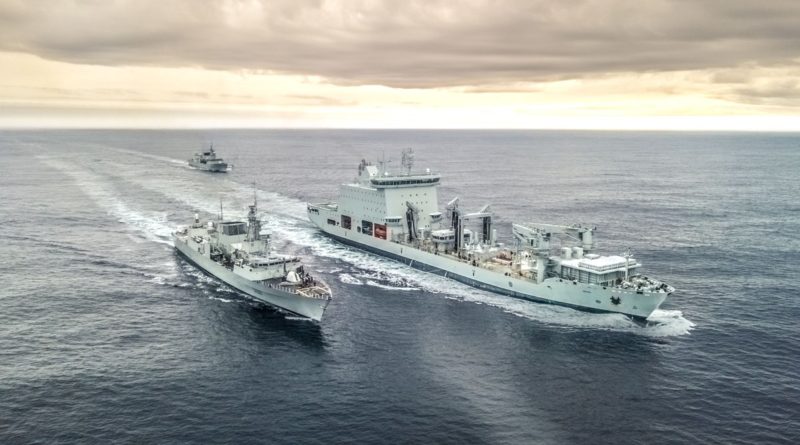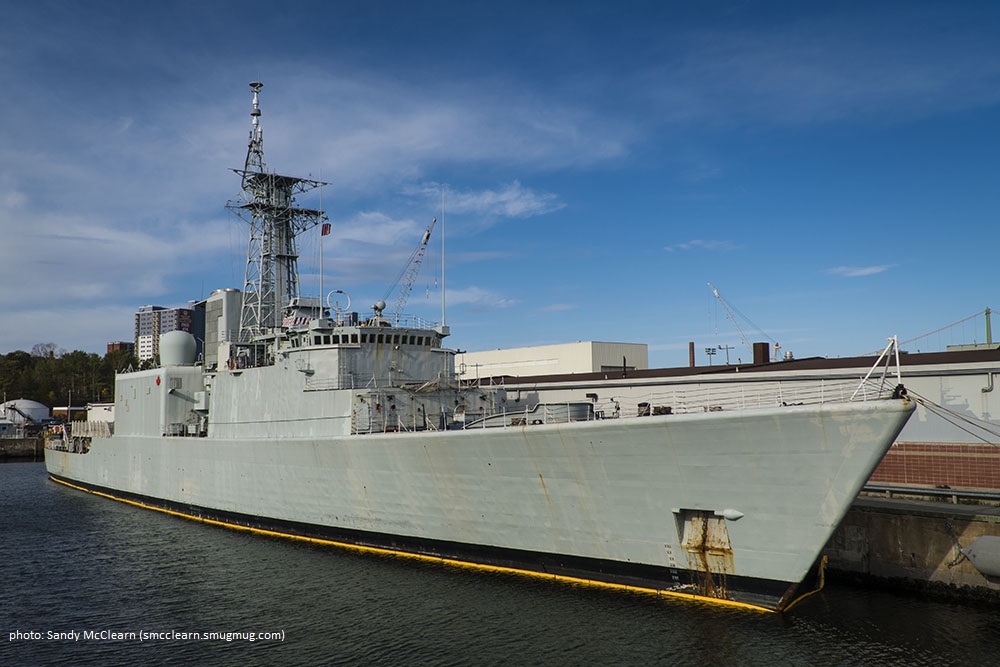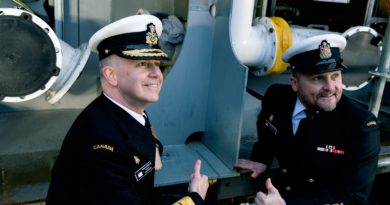Warships, Combatants, Types and Classes
Ships of the Royal Canadian Navy (RCN) can be described using a number of terms. The terms can lead to confusion amongst the media and consequently the general public about differences between ships. Further, members of the Canadian Armed Forces, including the RCN, can be casual in their use of terms, and some people, in and out of government, may choose to use terms incorrectly for political messaging and other purposes.
Warship and Auxiliary
Reference: San Remo Manual on International Law Applicable to Armed Conflicts at Sea (12 June 1994)1
Section V: Definitions
13. For the purposes of this document:
(g) warship means a ship belonging to the armed forces of a State bearing the external marks distinguishing the character and nationality of such a ship, under the command of an officer duly commissioned by the government of that State and whose name appears in the appropriate service list or its equivalent, and manned by a crew which is under regular armed forces discipline;
(h) auxiliary vessel means a vessel, other than a warship, that is owned by or under the exclusive control of the armed forces of a State and used for the time being on government non-commercial service;
A warship of the RCN is distinguished, in addition to other marks, by flying a commissioning pennant, indicating the vessel is under the command of a commissioned officer. (As an aside, in the RCN it is an officer who is commissioned or ordered to put a ship into service, not the ship itself which is commissioned as is in the US Navy.) Minor vessels of the RCN, e.g., diving tenders, with a non-commissioned officer in charge and crewed by members of the Canadian Armed Forces (CAF), are not warships. Other vessels of the RCN, particularly harbour service vessels, e.g., tugs, with civilians of the DND as master and crew, are not warships.
Warships enjoy certain benefits such as sovereign immunity to host nation laws when visiting foreign ports that are available to other ships.2
Combatant and Non-Combatant
Reference: NATO Allied Procedure Publication 20 (APP-20) Standard Ship Designator System
Paragraph 0102.1.
- Combatants. Naval, Coast Guard and Government-owned vessels/craft which possess some sort of inherent armed or combat capability primarily intended for offensive use.
- Non-Combatants. Auxiliary, Service Support or Merchant/Recreational Vessel types, which tend to be role specific. They may possess an armed or combat capability intended primarily for self-defence purposes.
Frigates, mine warfare vessels, patrol vessels and submarines of the RCN are combatants. RCN replenishment oilers, as auxiliaries and service support, are non-combatants. The Motor Vessel (MV) Asterix, a vessel contracted to the RCN and under naval control to provide support services, is a non-combatant.
At times the terms combat and non-combat are used when referring to naval vessels. Such use can be misleading as all vessels can be deployed to and operate in areas where they can become involved in combat, even if only defensively or as targets. The terms combatant and non-combatant should be used for ships. The terms combat and non-combat are better applied elsewise, e.g., combat zone, non-combat activities.
Type and Class
The term type is used to distinguish between the general groupings of ships by function, armament, size, and other characteristics. APP-20 lists designations (initialisms) for ship types, e.g., destroyer is DD. Types of ships in the RCN include frigates (FF), mine warfare vessels (MM), submarines (SS) and replenishment oilers (AOR). Asterix is a civil vessel and has not been publicly typed; it is understood the vessel shows as an AOR in naval location plotting systems.
The term class is used to distinguish ships built generally to the same design within a type. It is current RCN convention to name a class after the first ship of the class. Classes in the RCN include Halifax-class frigates, Kingston-class mine warfare ships and Victoria-class submarines. Asterix is a civil vessel and has been classed by her civil owners as Resolve-class. CAF members, especially of the RCN, may casually refer to classes using old nomenclature, e.g., Iroquois-class destroyers as Tribal-class, or using shipbuilding project titles, e.g., Kingston-class as MCDV (Maritime Coastal Defence Vessels).
Not all navies use the NATO system to designate ship types. Though nicknamed Kresta II cruiser by NATO, the Soviets designated their Project 1134A ships as Large Anti-submarine Ships (BPK).
Some writers may reverse the meanings of type and class, whilst in air forces the terms may officially be reversed (e.g., fighter class, Hornet type).
Occasionally a reporter may use the term ‘battleship’ when attempting to write generally about naval ships. A battleship is a specific type of combatant, a big-gunned, heavily-armoured, large warship. No battleship is currently in active service. When writing about naval ships and a general term is desired, use of warship, combatant or a specific type is better writing.
Notes:
- San Remo Manual (accessed 27 July 2018): https://ihl-databases.icrc.org/applic/ihl/ihl.nsf/385ec082b509e76c41256739003e636d/7694fe2016f347e1c125641f002d49ce
- See “Warships: Sovereign Immunity versus Sovereign Territory”: http://rusi-ns.ca/warships-sovereign-immunity-versus-sovereign-territory/




